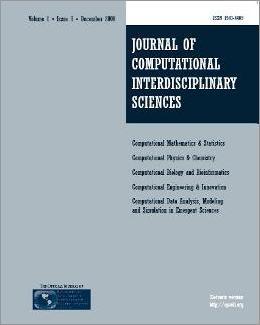
Editorial Office:
Management:
R. S. Oyarzabal
Technical Support:
D. H. Diaz
M. A. Gomez
W. Abrahão
G. Oliveira
Publisher by Knobook Pub


Editorial Office:
Management:
R. S. Oyarzabal
Technical Support:
D. H. Diaz
M. A. Gomez
W. Abrahão
G. Oliveira
Publisher by Knobook Pub
doi: 10.6062/jcis.2019.09.03.0152
(Free PDF)William P. Hernández, Daniel A. Castello and Thiago G. Ritto
The process of polymeric materials production may lead to material heterogeneities. Therefore, the mechanical behavior of these materials may present unique characteristics from point to point. Neverthe- less, this characteristic is rarely taken into account inasmuch as, in general, most model building strategies assumes material homogene- ity when performing inverse analysis. Furthermore, the dimensions of the test specimens may not be appropriate to evaluate the levels of heterogeneity within the material. This work investigates the impact of viscoelastic material heterogeneities when these are used to build laminated structures commonly used as passive vibration components. The viscoelastic behavior is modeled by means of a fractional deriva- tive constitutive equation. The heterogeneity of the media is modeled by means of stochastic fields. Two types of correlations are considered to model the covariance matrices. A numerical application is presented for a three-layer laminated structure with a viscoelastic core.
Viscoelasticity, Stochastic Fields, Laminated Structures, Damping, Uncertainty Quantification.
[1] Hernández WP, Castello DA and Ritto TG. Uncertainty propagation analysis in laminated structures with viscoelastic core, Computers & Structures, 164(1), 2016, 23-37.
[2] Fractional calculus - A different approach to the analysis of viscoelas- tically damped structures, AIAA Journa, 21(5), 1983, 741-748.
[3] Wineman, A.S and Rajagopal, K.R., Mechanical Response of Polymers: An Introduction, Cambridge University Press, Cambridge, England ; New York, 2000.
[4] Pritz, T., Five-parameter fractional derivative model for polymeric damping materials, Journal of Sound and Vibration, n5(v265), 2003, 935-952.
[5] Lord GJ, Powell CE and Shardlow T. An Introduction to Computa- tional